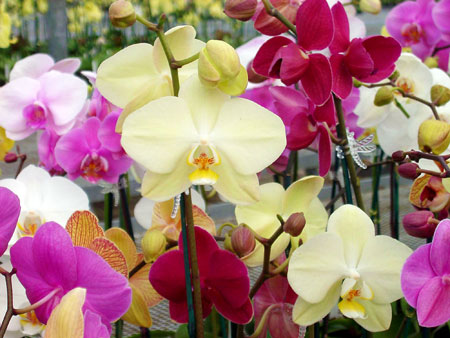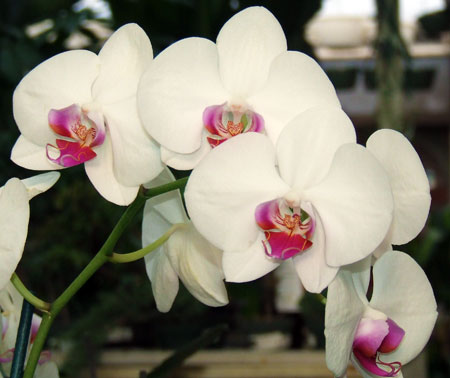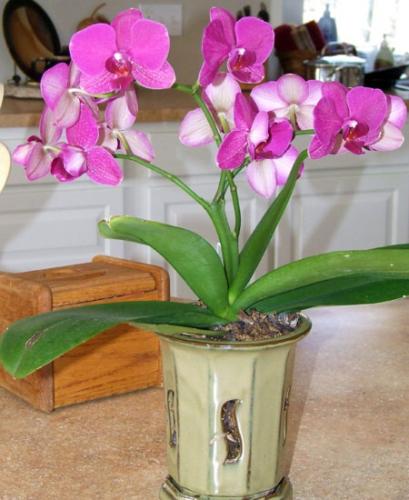Growing orchids for beginners
Growing orchids on your windowsill can be enjoyable and provide long-lasting color.
I’ve always admired people who grow orchids. Not having much luck with them in college, I never understood how my classmates could wait for an ugly, seemingly dead, greenish plant in a crusty old pot to bloom. And yet, with the right home environment, my classmate’s patience soon resulted in a spray of vividly colored, softly shaped and sometimes fragrant blooms.
In the past, orchids have gotten their snooty, “green thumbs only” reputation due to temperamental growing requirements, high price and the long wait between blooms. However, in the last 20 years, scientific research and tissue culture has led to house-friendly clones that have changed the orchid’s reputation. Today, they are widely available and easy on the pocketbook!
One of the easiest orchids to grow is the Phalaenopsis, also known as the moth orchid. This thick-leaved plant gives rise to one or more “spikes” of softly rounded blooms that resemble a moth. The blooms can be 1 to 2 inches in diameter and will vary in color from clear whites, rich yellows to deep purples.

A mix of Phalaenopsis orchids.

Phalaenopsis orchids have softly rounded blooms.
Phalaenopsis or “phals” are the orchid of choice in a home setting for a number of reasons. Their thick, waxy leaves tolerate our dry home environment better than others with slender, wispy foliage. Once a phal is blooming, the plant may provide color for four to six months. I’ve had one plant in continuous bloom for up to 11 months at a time.
It’s a jungle out there
When growing plants of any kind, it is wise to be thinking of their native environment. If you think about where an orchid would grow naturally, you might find yourself dreaming of tropical paradise. While our home environment is nowhere close to this, there are a few things you can do to ensure your orchid has a long life on the windowsill.
Once in the home, orchids will adapt well when provided with bright, indirect sunlight, water and humidity. Placing the orchid directly on a windowsill may be fine in the winter months, but summer sun can often dry out the plant too much. If the leaves become wrinkled or floppy, you will know that the orchid is unhappy.
I often will “up-size” the plant as soon as I get it home. In other words, when you purchase your orchid, buy some orchid moss and bark and a slightly larger pot, too. Pot it in the larger container following the product recommendations as soon as you get it home. This will allow you to keep those fleshy, worm-like roots moist longer. Otherwise, plan on faithfully watering, or soaking, the orchid root mass once a week and potting when the plant is finished blooming. Be sure not to get water into the growing tip, or newly unfolding leaf, as it will cause your orchid to rot.

Phalaenopsis orchid can be planted in a pot and easy to
grow on your windowsill.
More, please!
Once you get “bitten” by the orchid bug, you will want to add more plants to your collection and learn more about them. Many areas of Michigan have local Orchid Society chapters and shows where they sponsor classes and have products that will help you keep your orchids healthy. The American Orchid Society is a great resource for information.
For more information on a wide variety of smart gardening articles, or to find out about smart gardening classes and events, visit www.migarden.msu.edu. You can also visit Finneran’s blog or contact the Michigan State University Extension Master Gardener Lawn and Garden Hotline at 888-678-3464 with your questions.



 Print
Print Email
Email




